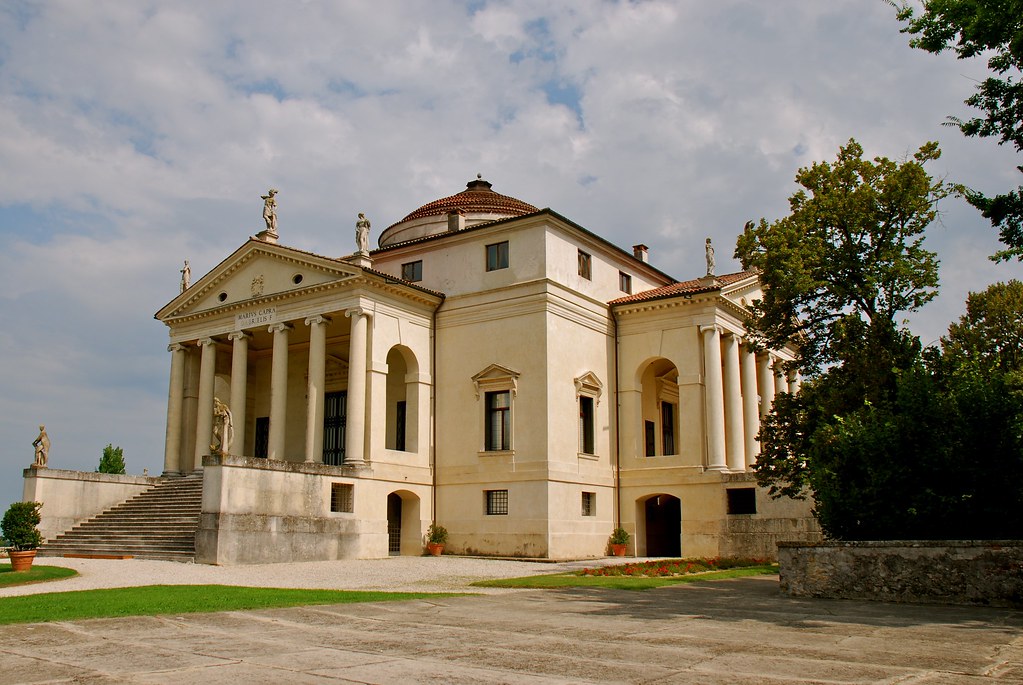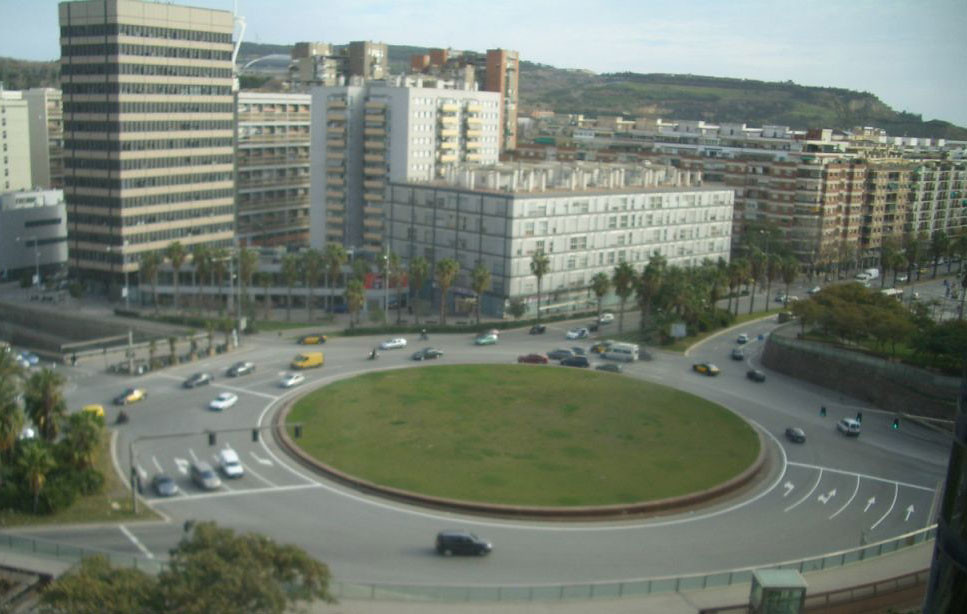The Italian word rotonda means the same as the English word rotunda. They both derived from the Latin word rotundus meaning round. I’d tugged that etymological thread in Rotonda West. However, Rotonda West wasn’t the only Rotonda. Far from it. Many more existed although usually in Italy as one would expect, or in places where Italian and Roman influences found a home.
Rotonda, Basilicata, Italy

I discovered an entire town of Rotonda and it was a descent size too (map). Perhaps 3,500 people lived there. According to the Italian version of Wikipedia, the name first appeared in a document in 1083. A castle sat atop a knob hill and a town formed around it in a circular pattern. This physical appearance described the town and gave it a name. The castle fell to ruin long ago and the town grew imprecisely over generations so nothing remained of its roundness other than the name.
Villa Almerico Capra “La Rotonda”

Outside of Vicenza in northeast Italy rose a magnificent villa from the Sixteenth Century. The owners named it Villa Almerico Capra in its official capacity. However it carried the common nickname, “La Rotonda” (map).
The masterful architect Andrea Palladio designed this structure for bishop Paolo Almerico “who after leaving his brilliant career at the papal court, comes back to his birthplace and prefers the quiet countryside to the family palace”. Being closely connected to the papal court during the Renaissance seemed like a pretty good deal, I suppose. Forty years would pass before the villa reached its final perfection, well after Palladio and Almerico both passed away. By then it was in the possession of the Capra family.
The property passed to Count Valmarana in the early Twentieth Century and it still remains in the family. Maintaining a facility of that grandeur must be expensive because it’s been open to the public since 1986. People can tour its grounds and interior on a regular schedule, or they can rent it out for cultural events, corporate gatherings or even parties. It remains one of the most significant contributing structures to the surrounding UNESCO World Heritage Site, the City of Vicenza and the Palladian Villas of the Veneto.
The Rotonda in Thessaloniki, Greece

Located physically in Greece, this Rotonda was a Roman structure commissioned by the emperor Galerius in the early Fourth Century. They built it at the same time as, and adjoined it with, another feature known as the Arch of Galerius. It celebrated a military victory over the Persians. Both formed part of a larger palace complex.
Thessaloniki became an important trading center and political power during this period and it made sense to locate imposing structures like these in the city (map). The site Sacred Destinations described the evolving purpose of the Rotonda over the centuries:
“The Rotunda of Galerius was converted into a Christian church in the late 4th century or mid-5th century… The Ottoman Turks ruled Thessaloniki from 1430, and in 1591, Agios Georgios was converted into a mosque… After serving three religions, the Rotunda is now a deconsecrated museum. It has been undergoing extensive restorations ever since the destructive earthquake of 1978. The Rotunda reopened in 1999.”
A minaret still stands outside of the Rotonda from the period when it served as a mosque.
Spanish for Roundabout

The Spanish word for round was redondo, yet they adopted the Italian word rotonda for roundabouts. That made it difficult to search other uses of rotonda. I kept bumping into images of roundabouts. I felt it would be appropriate for me to select one of those Spanish roundabouts at random and take a closer look. So I chose the Plaça d’Ildefons Cerdà (map) in Barcelona primarily because I found a nice photograph of it that I could share because of its creative commons license.
The choice came with a heavy dose of irony. Ildefons Cerdà (1815-1876), was “considered to be one of the fathers of ‘comprehensive city improvements through physical planning’ and, essentially, modern-day planning itself.” He designed an extension beyond the original city of Barcelona called the Eixample.
Here’s how El Periódico Barcelona described the roundabout named for him (the original was in Spanish; I cleaned it up from a mangled Google Translate rendition):
“He designed a grid. But the square is a perfect circle. He thought of rectangles and octagons. But they put his name to .. a roundabout. He envisioned a city of quiet, peace and pedestrians. But the place is the territory of noisy engines. He dreamed of green, with more gardens than buildings. But the beautiful meadow that lies at the center of the square is only achievable for pigeons, provided they fly to it.”
In other words, city officials put his name on something he would have hated.

Leave a Reply